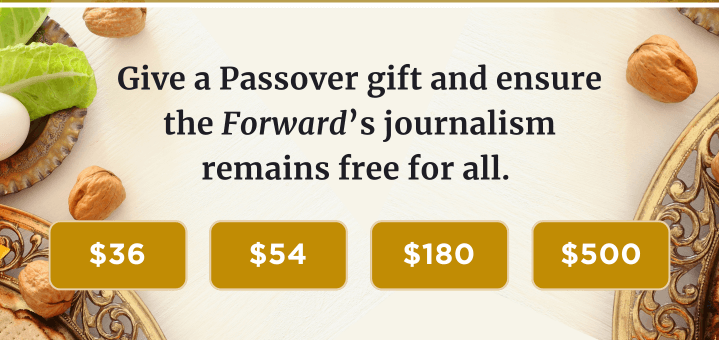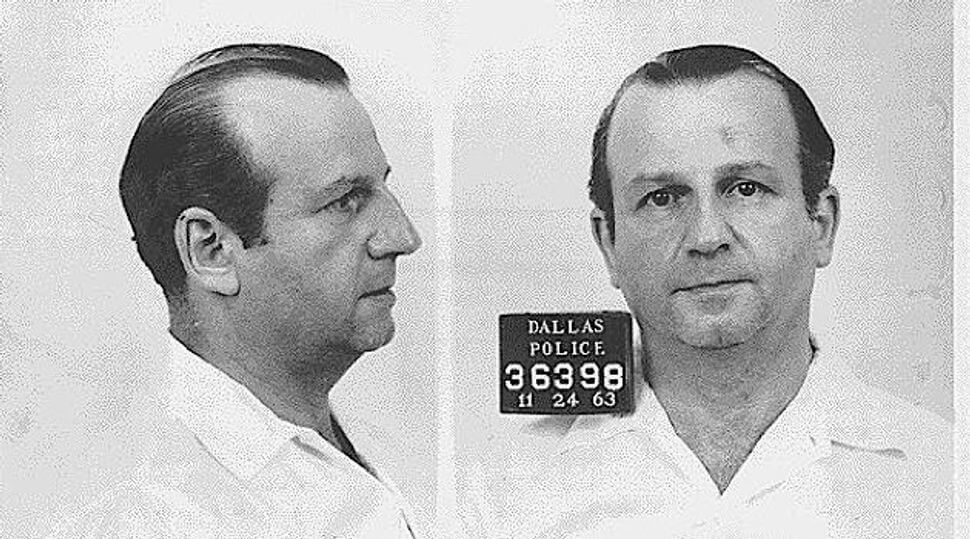Photographs That Are Deserved

Paper Planes: The photographer catches this launch through a window. (Photo by Willy Ronis)
French-Jewish photographer Willy Ronis, born in 1910, has never been more popular. Honored at a special exhibit at this summer’s Rencontres d’Arles photography festival on view in Southern France until September 14 (alongside such counterculture stars as America’s Nan Goldin), Ronis has recent books out from a flurry of international publishers, including Taschen, Phaidon, Gallimard and Hoëbeke. The sole survivor of a generation of famous French photographers that included Henri Cartier-Bresson and Robert Doisneau, Ronis has become a media darling as his August 14 birthday approaches — his 99th. Yet, this son of a Ukrainian-Jewish portrait photographer father and a Lithuanian-Jewish pianist mother, both of whom fled pogroms to settle in Paris, still remains a belatedly recognized outsider.
Ronis’s religious mother made sure her son had a Jewish education (Willy was bar mitzvahed at Paris’s venerable Grande Synagogue on the Rue de la Victoire, familiarly known as the Rothschild-Schule). Ronis, however, remained an nonbeliever like his agnostic father, reserving his real devotion for the labor movement. Outraged to see his father working himself to an early death, the young Willy, despite years of studying to be a violinist and composer (the latter studies were with the noted French-Jewish musician André Bloch), became his ailing father’s assistant. An unrelenting diet of tediously static identity photos and posed marriage snapshots spurred Ronis to redefine photography for himself as something essentially dynamic, capturing movement on the spur of the moment with crackling energy.
Soon after his father’s death in 1936, Ronis created some of his most celebrated images, like “Front Populaire, 14 Juillet 1936” (“The Popular Front,” July 14, 1936), which immortalized the revelry of humble Parisians after the election of Léon Blum, the first Socialist — and first Jewish — premier of France. A moderate left-winger, Blum resolved to augment workers’ rights, and despite many attacks, such as one by a right-wing National Assembly deputy who termed Blum a “cunning Talmudist,” the newly elected Socialist was widely seen widely as a symbol of hope (short-lived, as it turned out). Ronis’s immediate empathy with workers was translated into photos marked with seemingly unplanned architectural symmetry (which Ronis himself has likened to Bach’s counterpoint), especially when compared to the relatively cold formalism of Cartier-Bresson, or the sometimes sentimental, staged images of Doisneau.
Armed with a secondhand Rolleiflex, Ronis captured vivid, strikingly natural-seeming images like “Rose Zehner*, Grève aux Usines Javel-Citroën, 1938” (“Rose Zehner, Strike at the Javel-Citroën Factory, 1938”), showing a powerful female labor organizer haranguing fellow workers with theatrical zest. Depicting hefty French laborers as moving with the grace of professional dancers became a Ronis specialty. His subject, Rose Zehner, soon became a Resistance fighter. Zehner would be reunited with Ronis decades later in a 1982 feature-length documentary film, “Un Voyage de *Rose” (“Rose’s Voyage”), in which both photographer and subject reminisced about their left-wing friends of long ago. These included French-Jewish cinematographer and union activist Henri Alekan and popular singer Francis Lemarque (born Nathan Korb of Lithuanian-Polish Jewish origin).
More pertinent to Ronis’s growing aesthetic mastery was his collegial friendships with fellow photographers like Izis (born Israëlis Bidermanas in Lithuania), David “Chim” Seymour (born David Szymin in Warsaw) and Robert Capa (born Endre Ernö Friedmann in Budapest). The steady rise of European fascism made Ronis feel especially close to these émigré friends and colleagues. Already feeling excluded as a boy, due to schoolyard antisemitic jokes, Ronis was not inclined to try to live under the German occupation overoptimistically, as many French Jews did at first. As Ronis recently told a Radio France Internationale interviewer with typical lapidary concision, “I didn’t want to wear a yellow star.” So he fled to the South of France with false papers (his mother, who refused to leave Paris, managed to survive the occupation, shielded by friends and neighbors).
After the war, when Ronis returned to Paris with the woman who would become his wife, he quickly realized that many of his Jewish relatives, friends and neighbors had not been as fortunate. An atypically tragic aura invades some of Ronis’s postwar photos, like those taken at a 1949 commemoration held at Oradour-sur-Glane in west central France, the site of a Nazi massacre where almost an entire village, including women and children, was burned alive. Ronis’s images taken during the commemoration ceremony show visitors (especially children) reacting to the site with somber reverence. As if in a subliminal search for other survivors, Ronis soon became a visual poet of Belleville, then, as now, a lower-class Parisian neighborhood with a historic population of Jewish residents. As Karen Adler’s perceptive “Jews and Gender in Liberation France” (Cambridge University Press, 2006) notes, Ronis “humanized Belleville’s poverty and architectural decline” after World War II. Essential to his capturing of these lines and forms is that for a while after the war, cars were still very scarce, until eventually they returned in force to Paris, suffocating the city.
Away from Paris the same year, Ronis took what remains his most loved photo, “*Le Nu Provençal: Gordes, *1949” (“Nude in Provence, Gordes, 1949”), a celebration of sensuality that shows his wife at a wash basin in a village bedroom in Southern France. Despite such exultant imagery, to some observers Ronis retains a sense of dislocation and apartness that is integral to his artistry. His friend and fellow photographer Brassaï dedicated his volume of “Conversations With Picasso” “to Willy Ronis, the distant one.” Amid all the merited hoopla, it is worth recalling that this photographer’s sheer survival has an element of the escape artist to it, a sleight of hand that perhaps can never be fully analyzed or understood.
Having retired from photography almost a decade ago because of arthritis, and having survived his wife as well as their son, Vincent, Ronis now lives in a humble two-room flat in Belleville. He emerges for public appearances and patiently receives visitors eager to interview and photograph him, sometimes with frankly odd results. Despite what seems like friendly forbearing toward young shutterbugs, Ronis recently confessed to the French daily Le Monde: “I have little esteem for machine-gun [photographers]. It may be a severe notion of my trade, but I believe an image must be deserved before it can be taken.” Ronis has deserved, and taken, some of the memorable images of his century.
Benjamin Ivry is a frequent contributor to the Forward.
A message from our Publisher & CEO Rachel Fishman Feddersen

I hope you appreciated this article. Before you go, I’d like to ask you to please support the Forward.
At a time when other newsrooms are closing or cutting back, the Forward has removed its paywall and invested additional resources to report on the ground from Israel and around the U.S. on the impact of the war, rising antisemitism and polarized discourse.
Readers like you make it all possible. We’ve started our Passover Fundraising Drive, and we need 1,800 readers like you to step up to support the Forward by April 21. Members of the Forward board are even matching the first 1,000 gifts, up to $70,000.
This is a great time to support independent Jewish journalism, because every dollar goes twice as far.
— Rachel Fishman Feddersen, Publisher and CEO























